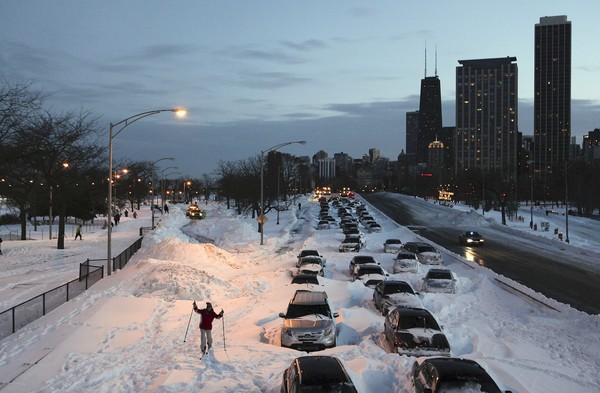Author: Rieva Lesonsky, Fundera Date: 11/15/2018
“Let it snow, let it snow, let it snow,” the holiday song goes. But for small businesses in areas affected by severe winter weather, the white stuff is anything but welcome.How can you prepare to keep your employees, customers, and business safe in a winter storm? Here’s what you need to know.
Know What to Watch Out For
Monitor local news and check weather forecasts at the National Weather Service website. Here are some terms you might hear:
- Winter storm: Winter storms involve snow, sleet, or freezing rain.
- Ice storm: When 1/4 inch of ice or more builds up, driving and walking are hazardous, and power lines can break because of the weight of the ice.
- Blizzard: A blizzard involves snow, gusty winds up to 35 mph or more, near-zero-visibility conditions, and a wind-chill factor that can be life threatening.
- Winter storm watch: Severe winter conditions might occur in the next 12-36 hours.
- Winter storm warning: Severe winter conditions are expected in the next 12-24 hours. This is defined as 4-6 inches of snow or sleet, or at least 1/4 inch of ice.
- Blizzard warning: A blizzard is expected in the next 12-24 hours.
Find and Fix Your Businesses’ Vulnerabilities
When severe weather strikes, you need to protect your building or store, your employees and any customers in the building, and your equipment.
Start by inspecting your building for any weaknesses that might lead to structural damage in case of a storm—leaks in the roof, cracks near doors and windows, and loose trim that could blow off and injure someone. Ask your landlord to repair any problems.
If your building maintenance doesn’t already handle this, make sure snow and ice are regularly removed from entryways, sidewalks, and roofs. If a customer slips on ice outside your doors, you could face a lawsuit.
Check your business’s insurance coverage to make sure it’s adequate for any damages that might occur from a storm, and upgrade it if necessary.
Compile the phone numbers you might need in an emergency, such as the fire department, insurance company, landlord, electrician, plumber, snow removal service, and local utility companies. Store it in the cloud, and print out several copies in case you can’t get online or use your computer in an emergency.
Review the equipment and systems that keep your business running, such as computers and manufacturing equipment. What would happen if the power went out or the building didn’t have heat? A backup generator can help keep things running during a power outage.
Make a Plan and Stick to It
Even if a storm doesn’t damage your building, it could lead to local powe
r outages, downed trees, highway closures, or other obstacles to business as usual. Think through what might happen to your business in various scenarios—such as public transportation shutting down and preventing your employees from getting to work, or the roof caving in—and plan how to deal with each situation.
You, your employees, and even customers may need to shelter in place at your business if you get snowed in. Stockpile enough food and water for three days (you can ask employees to bring their own “emergency kits” with food and blankets). Have plenty of flashlights, at least one battery-operated radio, batteries, and a first-aid kit.
Plan how you will communicate with employees, vendors, and suppliers in case of an emergency. Create a list with contact information that includes alternate ways to communicate. For example, if phone lines are down, you might need to text employees. If you must close for a few days (or weeks), let customers know via your business website and social media accounts.
Decide at what point in a storm watch or warning you will let employees go home, close the business, or tell employees not to come in to work. Create a chain of command so that if you aren’t available to make these decisions, someone else can.
Create a Continuity Plan
To keep your business running during or after a severe storm, set up the capability for people to work from home (if your type of business supports this). Having employees access your business network from home can expose it to vulnerabilities, so use cloud-based file-sharing and storage systems instead.
What if your building is uninhabitable after the storm or half your employees can’t get to work for a week? Figure out how you will keep the business running for an extended time if necessary. Business interruption insurance can help replace income lost if your business can’t operate after a disaster.
Talk to vendors and suppliers about their emergency preparedness, too. If you rely on steady delivery of inventory from a certain vendor, what will you do if the storm shuts them down? Do you have a backup vendor in place?
Be Ready, Be Set, Be Safe
Clearly, there’s a lot to think about when it comes to winter weather—so prepare a plan before the wind starts to howl. Rate your business’s emergency preparedness at ReadyRating.org; then visit PrepareMyBusiness.org to get a checklist you can use to prepare your business for winter weather.






